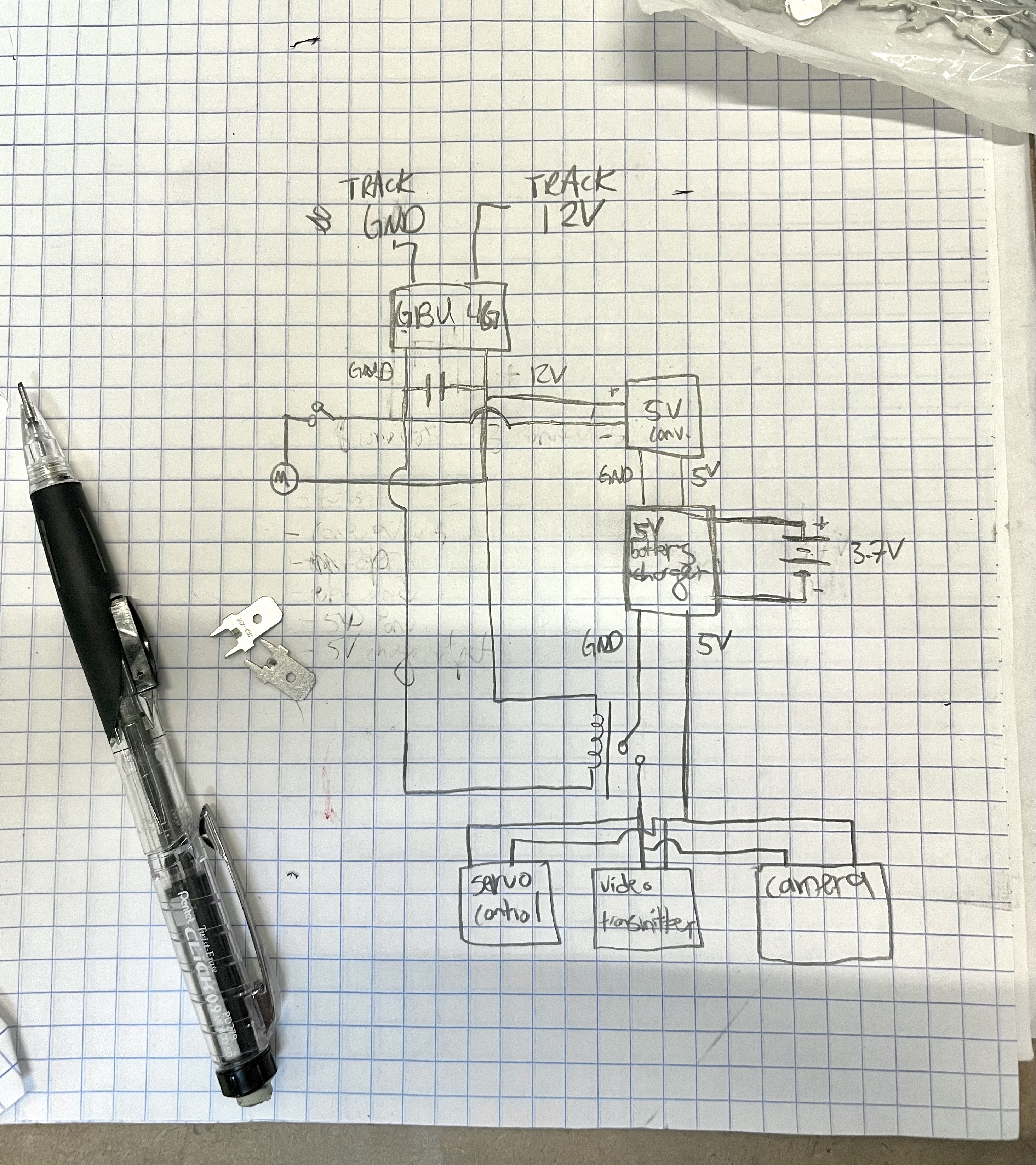Twisted Thruway
Exhibit Improvements
Twisted Thruway is one of the most popular exhibits at the National Museum of Mathematics. Three remote control cars run on twisting tracks, defying gravity using magnetized wheels. They are each controlled from a driver's seat where a visitor can steer the car and see on a display live video transmitted from a camera mounted on the front of each car.
Unfortunately due it’s complexity and age, it is one of the most temperamental and unreliable exhibits, requiring constant maintenance to keep it working for longer than a day or so. During my time working at Momath I have taken the initiative to redesign significant components of this exhibit in order to allow it to function much more reliably and consistently without maintenance.


Supplemental Battery System
The cars draw power from contacts touching the electrified track but they regularly got “stuck” due to inconsistent connections. I designed a circuit that would both charge a small LiPo battery and allow the car to be powered by the track when electricity was successfully flowing. But if there is a temporary break in the electrical connection, the circuit switches to battery power, allowing the car to continue functioning until the connection is reestablished. During this process I also reorganized the internal circuitry to make it easier to diagnose and repair.

Redesigned Electrical Pickups
The original car design completes an electrical circuit using a DIY rolling magnet pickup, which was another cause of the inconsistent power to the cars. With moderate usage, grime collected between the magnet and the pickup axle, preventing a clean connection. To improve this I did extensive research into existing methods of electric pickup and ultimately modified slot car components to create a significantly more reliable system for the exhibit that also removes the need for regular track maintenance. 

Custom Camera Mount
Right before I started at Momath the cameras used for transmitting the video feed were upgraded, making the existing camera mounts obsolete. As a replacement I modeled a replacement specifically to accommodate this new camera and maintain the same functionality.
